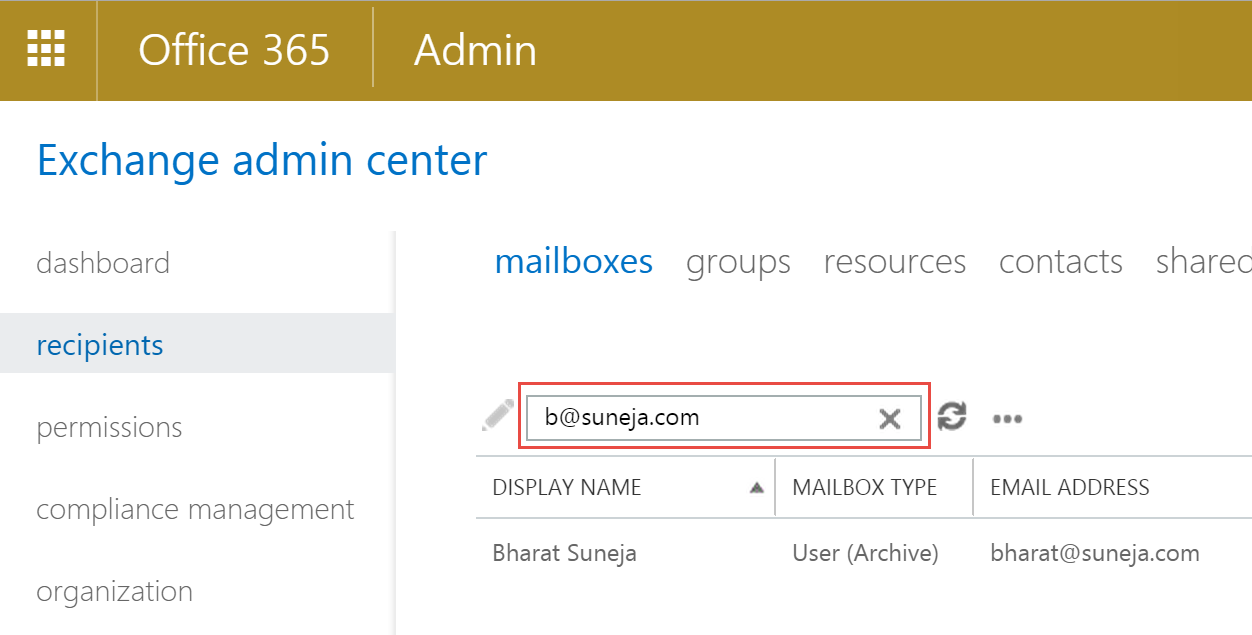

C:\ >( Get-OrganizationConfig).RootPublicFolderMailbox The following Exchange PowerShell command is an example of the output that can be used to verify that the first public folder mailbox is created with the HoldForMigration parameter: Specifying the HoldForMigration parameter locks the public folder hierarchy in Exchange Server 2013 or Exchange Server 2016 so that no public folders can be created by users until the migration is complete. The public folder mailbox should be created with the HoldForMigration parameter only if you are migrating from legacy public folders to modern public folders in Exchange Server 2013 or Exchange Server 2016. :::image type="content" source="media/no-active-public-folder-mailboxes-were-found-error/error-message-in-eac.png" alt-text="Screenshot of the error message in E A C."::: The following is a sample screenshot of the error message in EAC: :::image type="content" source="media/no-active-public-folder-mailboxes-were-found-error/error-message-in-ems.png" alt-text="Screenshot of the error message in E M S."::: This is a sample screenshot of the error message in EMS: If you're not currently performing a migration, create a public folder mailbox. This happens when no public folder mailboxes are provisioned or they are provisioned in HoldForMigration mode. No active public folder mailboxes were found. In this situation, you receive the following error message: You try to create a new public folder on the Exchange server.You try to access the public folder hierarchy by running the Get-PublicFolder cmdlet in Exchange Management Shell (EMS) or by using Exchange Administration Center (EAC).You perform one of the following actions in the environment: Don’t forget to follow us and share this article.No active public folder mailboxes were found error when creating public folderĪssume that you create the first public folder mailbox with the HoldForMigration parameter in Exchange Server 2013 or Microsoft Exchange Server 2016. Make sure that the Exchange Server URLs are set up correctly before proceeding.ĭid you enjoy this article? You may also like Certificate warning during or after a new Exchange Server installation. Use the script! The script can be helpful if you are going to deploy Exchange Hybrid. The script is here to make your life easier.
#How to find the exchange public folder mail server how to
In this article, you learned how to find Exchange Server URLs with a PowerShell script. Find the Internal and External URL, including the authentication method. Then, double-click the name of the Exchange Server.Ĭlick Outlook Anywhere. You have to find it with the GetExchangeURLs.ps1 script or Find autodiscover URL in Exchange with PowerShell.įor Outlook Anywhere, we need to find the information in another place in EAC. Good to know is that you can’t find the Autodiscover (Default Web Site) URL in EAC. In our example, it’s .ĭouble-click every item and find the Internal and External URL. Select the Exchange Server in the Select server menu. Click se rvers and click on virtual directories. You can find the URLs in Exchange Admin Center (EAC).

The next step is to configure the URLs on the new Exchange Server. The script did run, and the output is showing on the screen. When running the command, place the Server name behind -Server. Run Exchange Management Shell as administrator. Find Exchange Server URLs with PowerShell In the next step, we are going to run the script. This script is my edit to the script made by Paul Cunningham.

Save the script in the C:\scripts\ folder of your Exchange Server. The best way to find the URLs is with PowerShell.


 0 kommentar(er)
0 kommentar(er)
